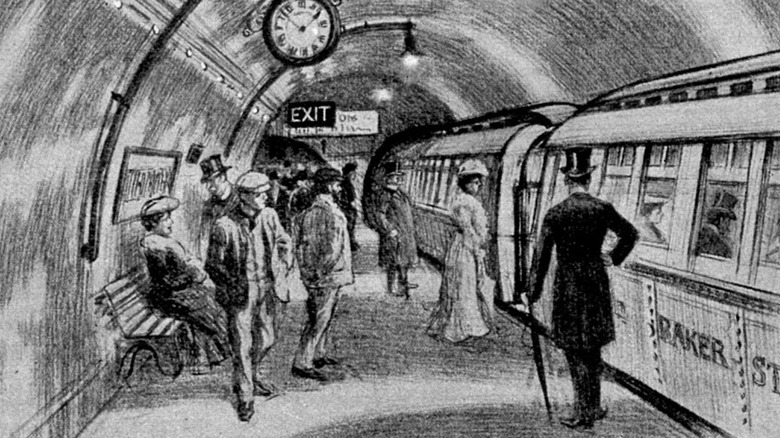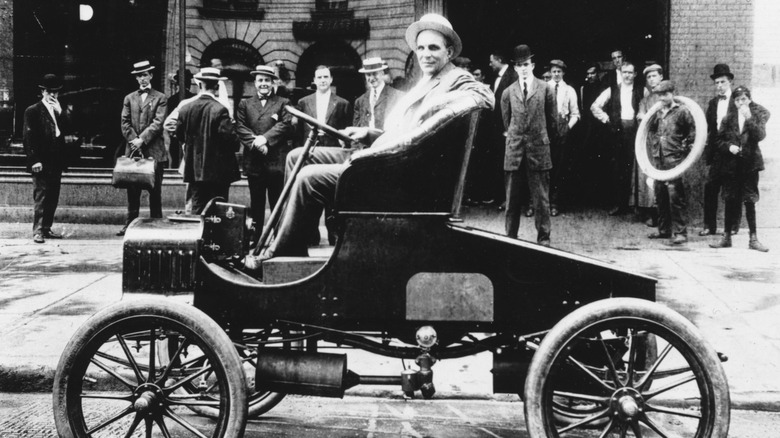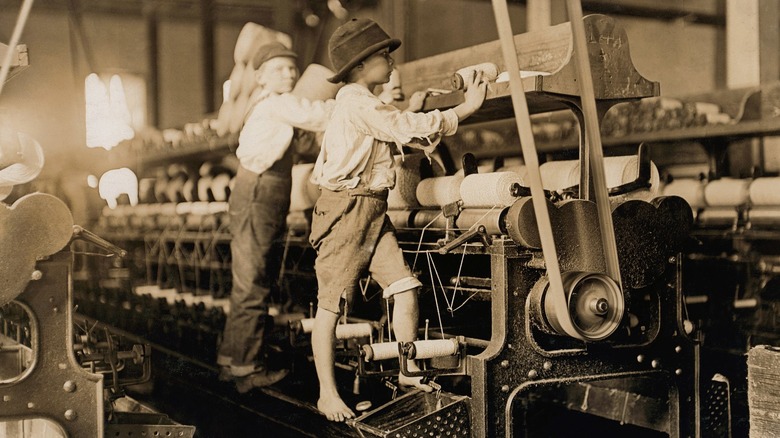What You Should Know About The Second Industrial Revolution
In high school history class, you no doubt learned about the Industrial Revolution — the period of intense technological change and social upheaval that shook the Western world. But what you may not know is that there have actually been a number of "Industrial Revolutions" throughout human history. The one you're likely picturing — with smoky factories, grinding gears, and oil-covered workers — was the First Industrial Revolution, which historians say took place from roughly 1760 to 1840, per Encyclopedia Britannica. But from the end of the 19th and into the early 20th century, the West saw the Second Industrial Revolution.
While the First Industrial Revolution primarily centered around energy and manufacturing, the Second Industrial Revolution was more oriented toward changes in transportation, communication, and consumer goods. These changes radically altered the daily life of working people — and not always for the better.
One of the key societal shifts brought about by the Second Industrial Revolution was the improvement and expansion of transportation technologies. The Library of Congress reports that the first American railroads were constructed in the early 1800s. But, per History, the Second Industrial Revolution saw the rapid expansion of these railroad lines — "from 35,000 miles in 1865 to 254,000 miles in 1916." This allowed people and goods to travel quickly and efficiently across entire continents. Improved steamships had the same effect on ocean travel.
The Second Industrial Revolution made life a whole lot faster
With the Second Industrial Revolution came an even more life-changing technology: the personal automobile. History reports that the first automobiles were introduced in the 1880s, but the most popular early car manufacturer, Ford Motor Company, was established in 1903, per Britannica. By using a highly efficient assembly line system — a practice which soon swept the manufacturing world — Ford was able to build cars that even working class people could afford.
But the "speed" of the Second Industrial Revolution wasn't limited to transportation. With the popularization of technologies like the telegraph, and later the radio, communication was also revolutionized; ideas crossed countries and oceans with a speed never seen before. The Second Industrial Revolution also saw a continued trend toward urbanization, as more workers flocked to cities to occupy factory jobs.
But not every shift brought about by the Second Industrial Revolution was positive or even neutral; many changes made life actively worse for the average working person. For example, per History, factory jobs were known to be especially grueling. In particular, the assembly-line system popularized by Henry Ford reduced many workers to cogs in a machine, forced to perform the same simple, repetitive task for hours at a time. Even worse, factories during the Second Industrial Revolution were full of child laborers. Per Virginia Commonwealth University, the first child labor laws weren't passed until the 1910s, and these were struck down by the Supreme Court as unconstitutional.
Life in the early 20th century wasn't necessarily much better
Due to those initial laws being revoked, it wasn't until 1938 that the minimum working age was formally set at 14. In the decades leading before this decision, children would often work physically demanding jobs to help support their families — sometimes "from seven in the morning until nine at night," per History.
Things weren't much better for housewives. History reports that many goods which used to be made in the house — like soap and clothing — started to instead be made in factories during the Second Industrial Revolution. While, in theory, this should have given housewives more free time, historian Ruth Cowan argues that it actually had the opposite effect. In her book "More Work for Mother," Cowan points out that, with readily available home goods and appliances, women were expected to perform household tasks more frequently than ever before — especially as new societal standards of cleanliness were adopted. And men, increasingly employed in factory labor, no longer helped out around the house.
The Second Industrial Revolution is often overlooked in history books, but it thoroughly changed the lives of workers across the globe. History reports that a Third Industrial Revolution took place in the middle of the 20th century with the advance of digital computing technologies. Likewise, some argue that the developments in AI, automation, and "smart technology" that we see today constitute a Fourth Industrial Revolution. Let's hope this one turns out better.


